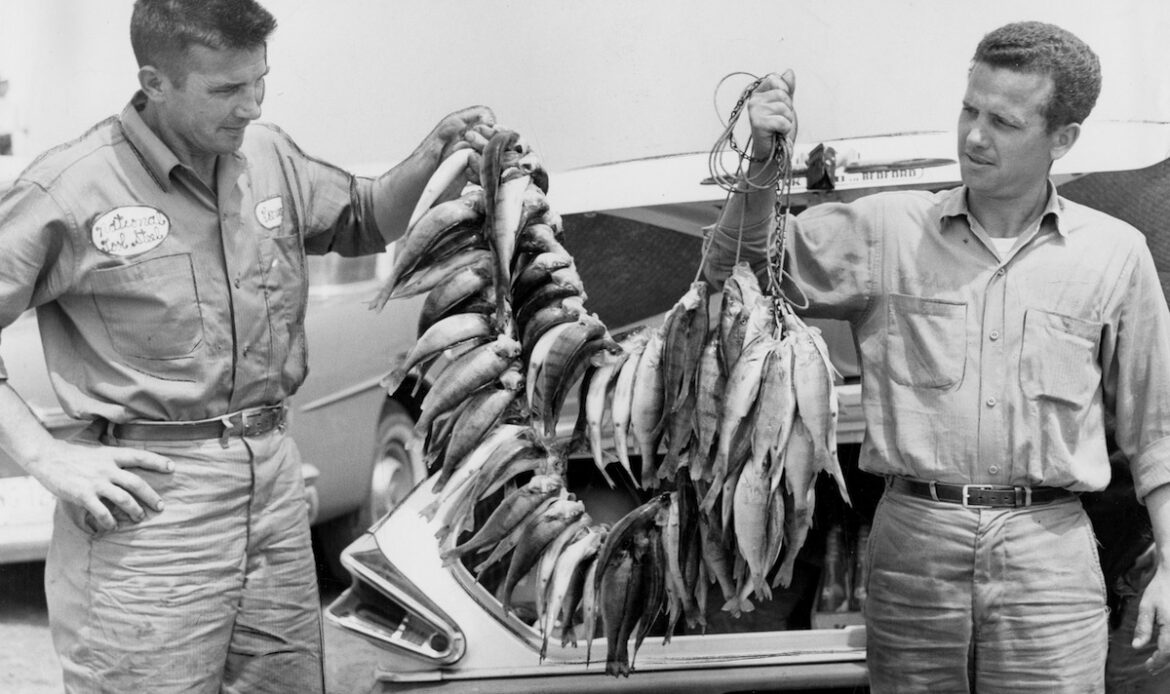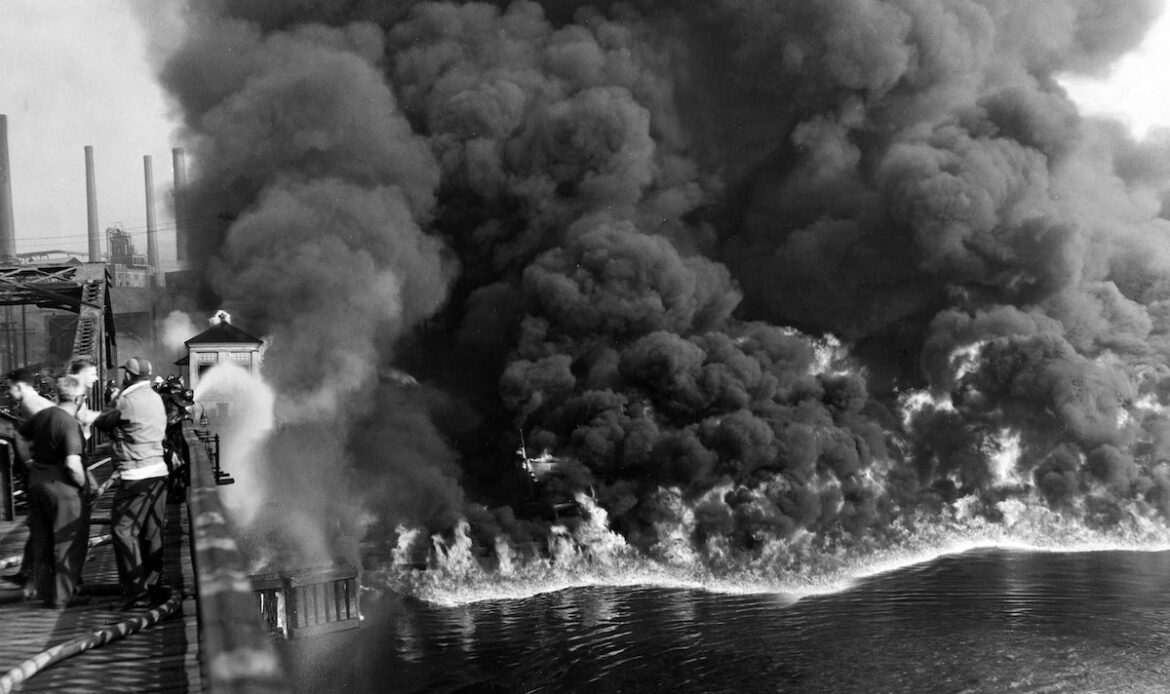What Caused The Fall of Lake Erie, America’s Greatest Fishery.
“For indeed in this Fresh-water Sea there are sturgeon, Assihendos (whitefish), trout, and pike of such monstrous size that nowhere else are they to be found bigger.” -Gabriel Sagard, 17th Century French missionary, upon first visiting the Great Lakes.

When viewed through a 21st Century screen, accounts of pre-industrial Great Lakes read like B-movie science fiction plots: lake trout the size of your leg; whitefish so dense you could scoop them with buckets; sturgeon longer than a man is tall crowded pectoral to pectoral in spawning runs you could walk across. How do we square the present-day lakes we’ve all grown up fishing, seeing, smelling, and reading about with the fertile paradise described from the days before our great-grandparents came of age? That’s one of the problems with being blips on the scale of geologic time—we lack perspective. History, no matter how true and well documented, hits like fiction.
The Great Lakes were, and are, one of the world’s finest freshwater fisheries—but none greater than Lake Erie. The shallowest and furthest south of North America’s inland seas, Erie is the most temperate and fertile with the widest diversity of habitat. Though it holds only 2% of the water in the Great Lakes, scientists estimate that about half the total fish population swim there.
Think about that. Half the fish in all of the Great Lakes live in Lake Erie. That was true 1000 years ago, and it’s true again today, but for a number of decades, that was not the case. Erie isn’t just arguably the greatest natural fishery on the continent; it’s also the symbol of America’s worst industrial failures and the heart of an ongoing redemption story.
The Garden: Aquatic Diversity in Lake Erie
Lake Erie once nurtured at least 138 different species of fish—from walleye to whitefish, sturgeon to suckers (15 different kinds!). This massive, shallow basin is a fish factory. Before European settlement, Erie’s surrounding flora kept a perfect balance. Stands of hardwoods held the higher banks. Savannahs of grass and wild oats stretched across the floodplains. Reedy marshes crowded the lowlands and river mouths. The expansive shallow flats teemed with aquatic vegetation. These stable ecosystems produced and maintained clear, clean, soft water with very little sediment and optimal nutrient balance. The toxic algal blooms that plague Lake Erie today didn’t exist.
By 1870, the hardwoods had been cleared, the grasslands burned, and soon the marshes would be drained so their rich soils could feed a rapidly growing nation.
How Lake Erie was Overfished
Around that same time, commercial fishing came to Erie. Rudimentary and inefficient at first, methods of take evolved with the technological boom of the 20th Century—starting with dip nets and ending with diesel trawlers. Ciscoes, whitefish, and lake trout were the initial focus.

Though never commercially targeted, muskies disappeared first. Lake trout weren’t far behind. Erie’s shallow water left them few places to hide, and their slow growth rate made them especially susceptible to overfishing. By 1890, lake trout had all but vanished. Sturgeon went soon after, followed by ciscoes, then pike, all of which had crashed by 1930.
The nets, however, almost never came up empty. As commercial fishing and habitat loss wiped out some species, others surged to take their place. Walleye, “blue pike” (which is actually a form of walleye), white bass, and whitefish expanded and replaced the extant fishes. These became the new backbone of Erie’s commercial fleet, but as the gear grew more efficient and habitat quality continued to decline, the fishery could not keep up. Whitefish began to disappear in the ’50s. Blue pike were gone a few years later. In the ’60s, walleye and yellow perch were the only commercially viable fishes that remained. Less than a decade later, all fishing would be halted, and Lake Erie declared “dead.”
The Cuyahoga River Fire and its Impact on Lake Erie
Though commercial fishing had a profound impact on Erie, the nets and trawlers were not primarily responsible for Erie’s ultimate collapse. That came in the form of industrial effluent, agricultural runoff, sewage discharge, and the inevitable landscape alteration from nearly ten million people settling on the shores of a lake in the span of three generations. Erie eventually hit a crucial inflection point with the Cuyahoga River Fire.

The same year that our astounding technological advances allowed humans to walk on the moon, we faced a grimier side of that coin. On June 22, 1969, the Cuyahoga River famously caught fire. A major tributary of Lake Erie that flows through downtown Cleveland, Ohio, the Cuyahoga hardly registered as a river anymore in the minds of local residents. They darkly joked that it flowed in different shades depending on which color the paint plant produced that day and that people didn’t drown in the river; they decayed. But the river’s infamous filth wasn’t widely known or discussed until Time Magazine ran a story about the failure of America’s sewage systems on August 1, 1969. The article mentioned the Cuyahoga catching on fire and included several startling photos that captured the national consciousness—a huge river aflame.
America’s waterways now burned, a perfect symbol for the unnatural state of modern nature.
Relative Truth
Collective memory views that article, and the story behind it, through its own opaque, oily sheen. Remembered as being about the Cuyahoga River Fire, the article only gave the fire three sentences of total copy—evidence that America was abusing its cherished and valuable rivers. Additionally, the dramatic photos that horrified the nation didn’t actually show the fire that occurred on June 22, 1969. They were misattributed images of a far more severe fire in 1952. (The river didn’t just burn that one time; it caught fire on numerous occasions over the course of a century.) Sometimes hyperbole serves a greater truth than facts. More on the fire in Part 2 of this series
High Mercury Levels Put an End to fishing on Lake Erie
On April 13, 1970, Gov. James A. Rhodes banned all commercial fishing in the Ohio waters of Lake Erie due to dangerously high levels of mercury found in the lake’s fish. The ban followed months of calamity for Erie’s commercial fleet. After high levels of the toxic heavy metal were detected in fish earlier that
year, all commercial catches had to be tested before going to market. Few could pass the test. Erie’s fishing culture, both commercial and recreational, crumbled. The greatest Great Lake was branded as a symbol of everything wrong with modernity—filth, death, toxicity, stench, and fear.
Though the commercial fishing ban only lasted 60 days, Erie’s story had been rewritten in the national consciousness. In less than a year, one of the lake’s major tributaries had burned across national headlines, and its fish had been branded as unsafe. The lake was publicly declared “dead.”
More than a half-century has passed, but Lake Erie still wears the stigma of America’s polluted past. In the next article of this series, we’ll discuss how Lake Erie actually played a pivotal role in improving water all over the country. We’ll share how Erie should be seen—not as a scar of our industrial past but as a triumph of American conservation.



